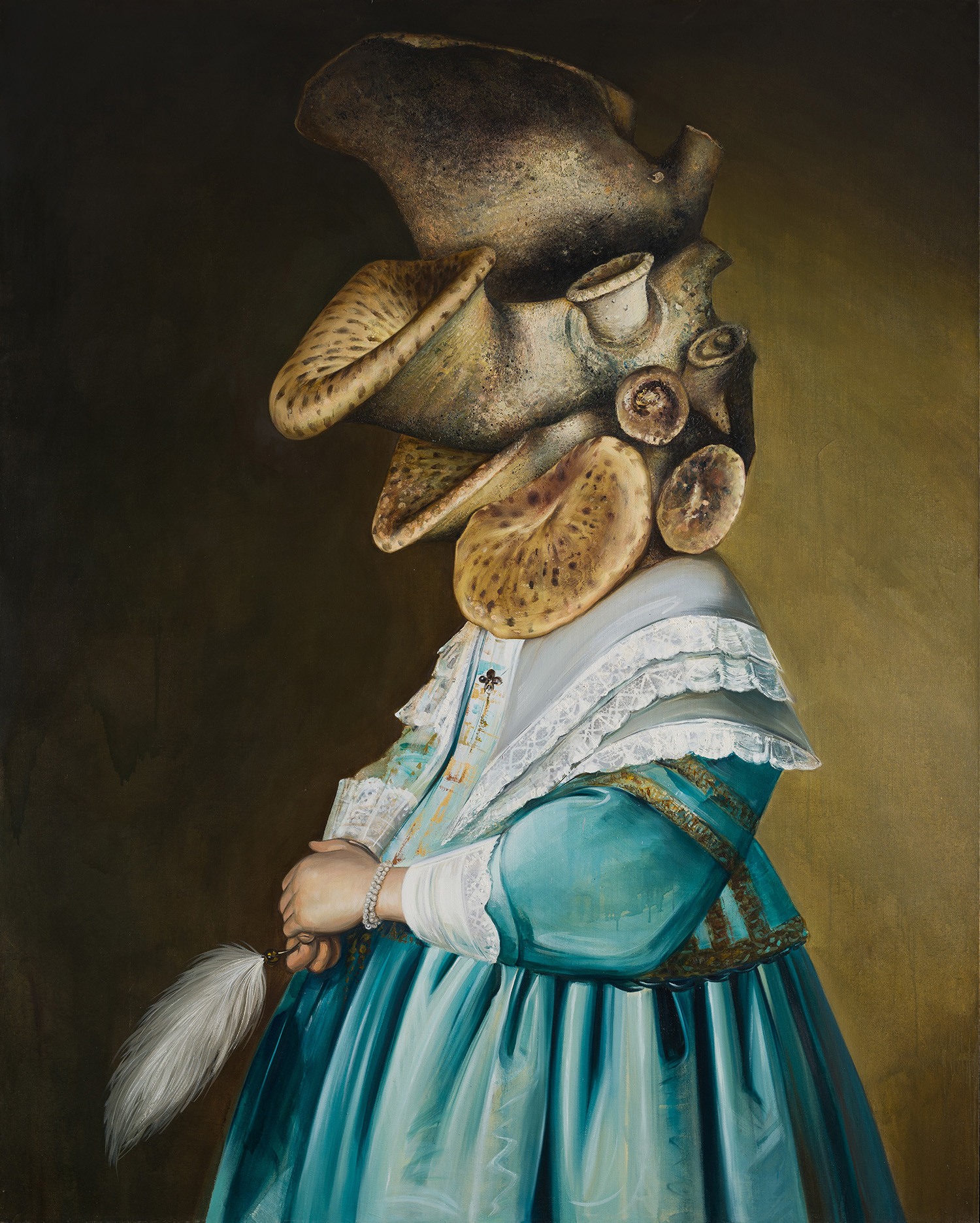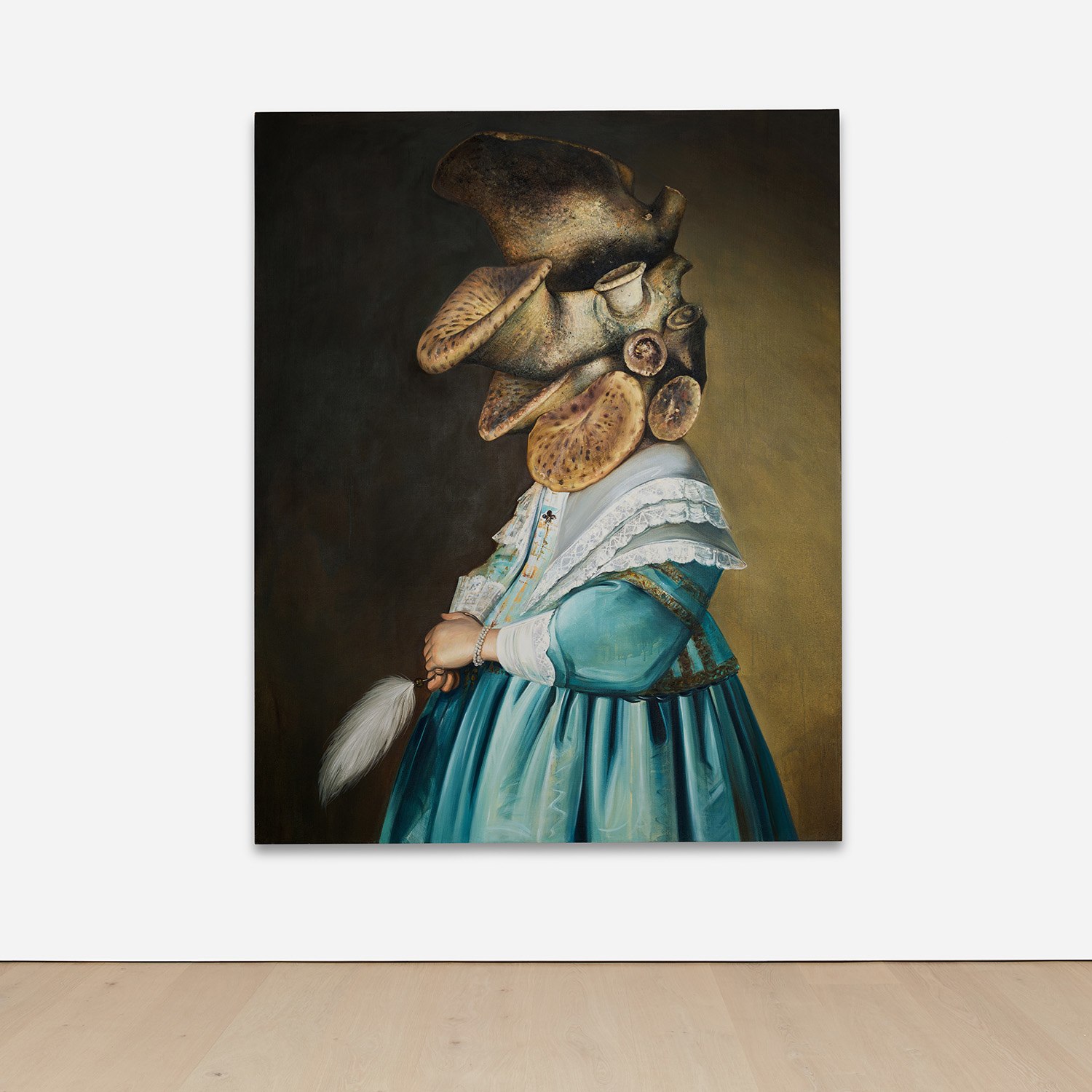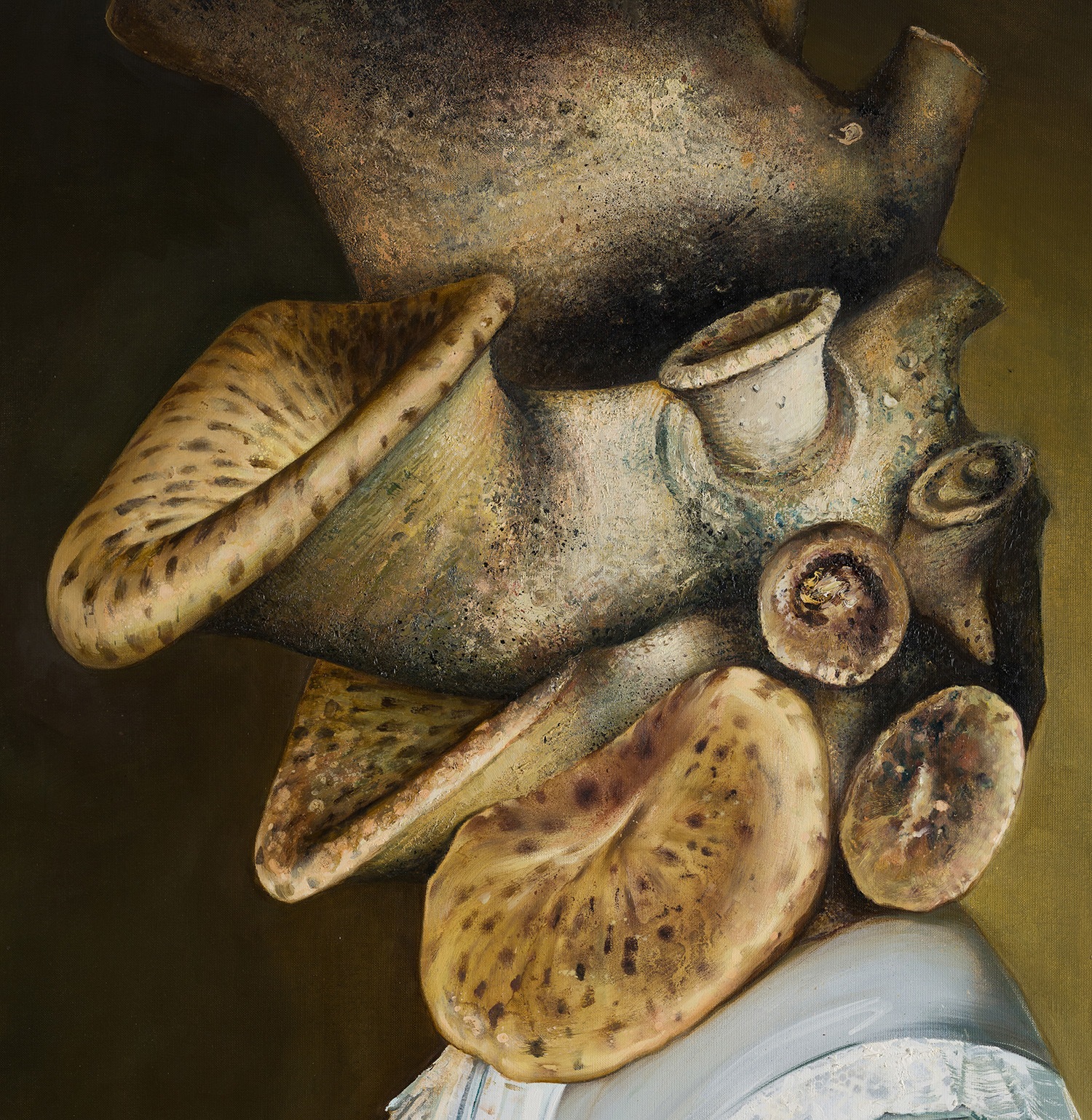





Property from an Important Polish Collection
3
Ewa Juszkiewicz
Girl in Blue
signed and dated "Ewa Juszkiewicz 2013" on the stretcher; further signed, titled and dated "Ewa Juszkiewicz 2013 "Girl in blue"" on the reverse
oil on canvas
78 3/4 x 63 in. (200 x 160 cm)
Painted in 2013.